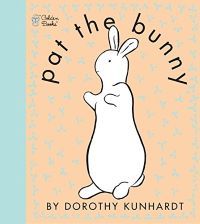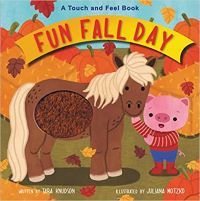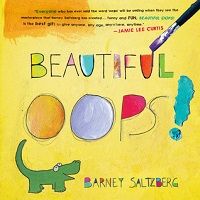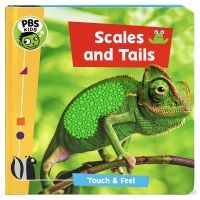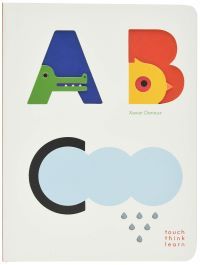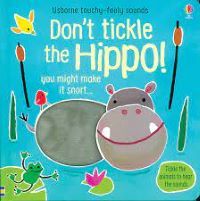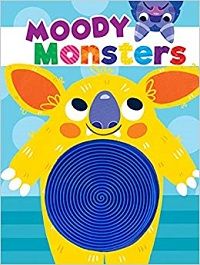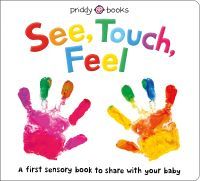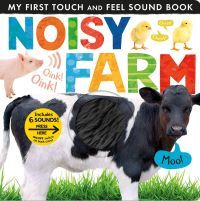In 1940, in an attic workroom not too far from New York City, Dorothy Kunhardt sat surrounded by paint pots, bits of material, and glue. Kunhardt was already a successful children’s book author, after writing and illustrating her first book Junket is Nice in 1935, followed by several other stories. She began writing after her husband lost his job in the hopes of bringing in more money, but writing for children was more than just an income stream. In his 1990 tribute to his mother, Phillip Kunhardt Jr. wrote in The New York Times that Dorothy “tried to capture the vivid ways little children talk and what kind of drawings they respond to. Out of all this came a stream of books that seemed on the surface to be nonsense stories but underneath were much more.” Kunhardt was always looking for new ways to communicate with children, and this time, she hit on an idea that would change the children’s book industry. That idea, of course, was Pat the Bunny. It’s a simple story about two children, Paul and Judy, two very blonde, very pale children, who “can do lots of things.” As Kunhardt writes about what Paul and Judy can do, she encourages the reader to do the same. The text is simple, but the book itself is so much more. Kunhardt incorporated interactive elements in her book, so that you, the reader, can do all the same things that Paul and Judy do: look in a shiny mirror, try on mother’s ring through a clever cut-out, play peek-a-boo with a fabric flap, and more. All of these things are standard in board books today, but it was Kunhardt who thought of them first. (I can’t prove that Kunhardt was the first to use scent in a children’s book, but I can tell you she included scented flowers more than 30 years before scratch-and-sniff technology was invented!) It was these interactive elements that made Pat the Bunny an instant bestseller, and it’s these elements that have kept it on the bestseller list for more than 80 years. Kunhardt knew that the scratchy, sandpapery beard texture would fascinate little ones, and she was sure that they would love to sniff the gently scented flowers. She spent her life studying details that she could incorporate into her books — her son said she’d happily spend the afternoon behind the pharmacist counter just to see how the pharmacist worked — and then she’d use those details to entice her readers. Now, of course, we know that books with multisensory elements are more than just fun and interesting for young readers: they’re developmentally important. In a recent New York Times article, Maria Russo explained that “our brains seek out and benefit from ‘multisensory’ experiences, especially when our cognitive abilities are still developing. Young children exposed to books that engage more than one sense tend to have better comprehension and enthusiasm for reading down the road.” A touch-and-feel book can help develop a child’s fine motor skills and teach them words to describe different sensations like “rough” or “soft.” Patting a bunny made of cardboard and fuzz can be great practice for the gentle patting of a real bunny (or cat or dog or sibling). For certain autistic children, the gentle stimulation from the touch-and-feel elements can be soothing and provide important sensory input. With all these benefits, it’s no surprise that touch-and-feel books caught on. After Pat the Bunny, more followed, including another classic, Little Fur Family by Margaret Wise Brown, illustrated by Garth Brooks. (The first edition featured real fur on the cover and a fur book jacket — eek!) But today, touch-and-feel books tend to be less author-driven. They’re usually written in-house at the publisher, and published either without an author name or under a pen name, or they’re created for a popular brand (these are also usually written in-house!). The text in modern touch-and-feel books is very simple, with as little as a single word on each page. In my research for this article, I searched near and far for more diverse picks, but I found zero credited to authors of color. The touch-and-feel books that do have named authors tend to come from big-name illustrators, and I’d love to see someone like Christian Robinson, Dan Santat, or Vashti Harrison have the chance develop a board book concept with touch and feel elements. Christian Robinson brought his illustrations into the 3D world with his Target collaboration — can’t you see him doing something amazing with the board book form? Below is a list of some of my favorite touch-and-feel books. I tried to keep this to only touch-and-feel books with tactile elements, but some also incorporate lift-a-flaps or other articulated pieces. I like to think Dorothy Kunhardt would be proud of all these squishy, scratchy, fuzzy, shiny books that followed her Pat the Bunny. If you’re looking for more board books, check out these new board books for 2022. If you have a particularly curious little one, you might enjoy these indestructible board books. Since finding diverse board books can be difficult, this list of board books by people of color is especially helpful. After reading all about these board books, you might wonder what makes a good one.
